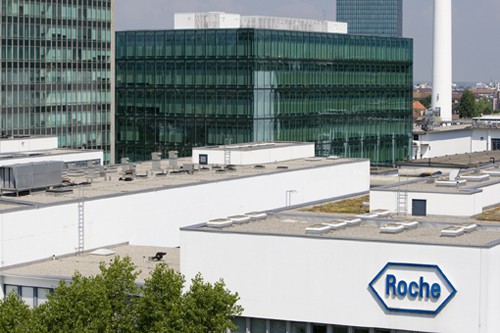
Roche’s blockbuster ambitions for new haemophilia A therapy Hemlibra have been bolstered by new data showing the drug was able to cut bleeds by more than two thirds compared to standard factor VIII therapy.
It’s the first time that any medicine has been able to outperform factor VIII prophylaxis, with patients switched to Hemlibra (emicizumab) given as a once-weekly or biweekly injection seeing the number of bleeds reduced by 68% compared to their prior therapy. It also reduced bleeds by 98% in patients who did not get any preventive treatment in the HAVEN 3 trial, which enrolled people with haemophilia A without factor VIII inhibitors, antibodies that limit the effect of clotting factor replacement.
“Even with current prophylactic treatments, many people with haemophilia A continue to have bleeds that can lead to long-term joint damage, and there is a need for more treatment options,” commented HAVEN 3 investigator Johnny Mahlangu of the University of the Witwatersrand in Johannesburg, South Africa.
Hemlibra was approved last year for haemophilia A patients who have developed inhibitors to factor VIII therapy, so the latest results could help unlock a much larger eligible patient population for Roche’s drug if approved. The data is being “submitted to health authorities around the world for approval consideration”, it said. Roche was awarded a speedy FDA review for haemophilia A without inhibitors via a breakthrough designation last month.
A second trial – HAVEN 4 – was also reported this morning and showed that Hemlibra could be given just once a month and still provide “clinically meaningful” control of bleeding rates in haemophilia A patients with and without inhibitors.
That would give the drug a dosing advantage over long-acting factor VIII-based drugs such as Adynovate from Shire – now in the process of a $65bn takeover by Takeda – as well as Biogen’s Eloctate, Bayer’s Kovaltry and CSLBehring’s Afstyla. All these drugs are generally dosed two or three times a week and, according to analysts at Jefferies, Hemlibra’s ease of administration positions it as the new standard of care for haemophilia A, potentially becoming a $5bn product at peak.
Roche has launched Hemlibra in the US at a price of $482,000 for the first year and $448,000 thereafter, and said it was pleased with early sales take-up that netted it $23m in the first three months of the year.
The two trials also back up the safety of Hemlibra, which became a matter of debate after some deaths were reported in patients taking it in trials or Roche’s compassionate use programme, which the company says were not linked to drug treatment.
A recent report by the US-based Institute for Clinical and Economic Review (ICER) described Hemlibra as an “exciting innovation” that can be cost-saving even at a high price, but only because the current costs of treating haemophilia A are so huge.
It said that aside from clinical and dosing advantages the drug also helps reduce caregiver burden, and increases patients’ ability to participate in work, school, or other activities. However, high drug prices and an insurance structure in the US that often requires significant patient cost sharing, means that even a cost-saving treatment like Hemlibra “likely won’t prevent … families from reaching their out-of-pocket maximum payment.”




